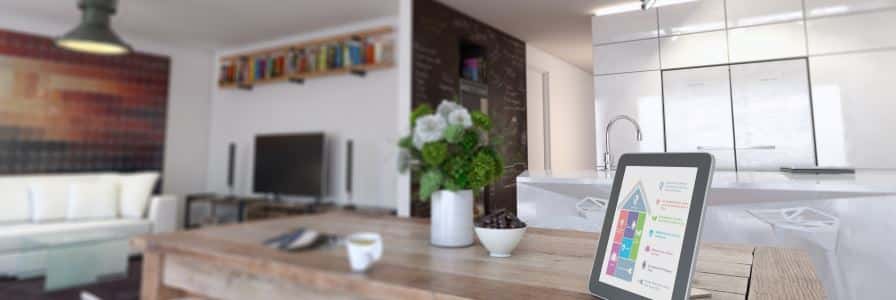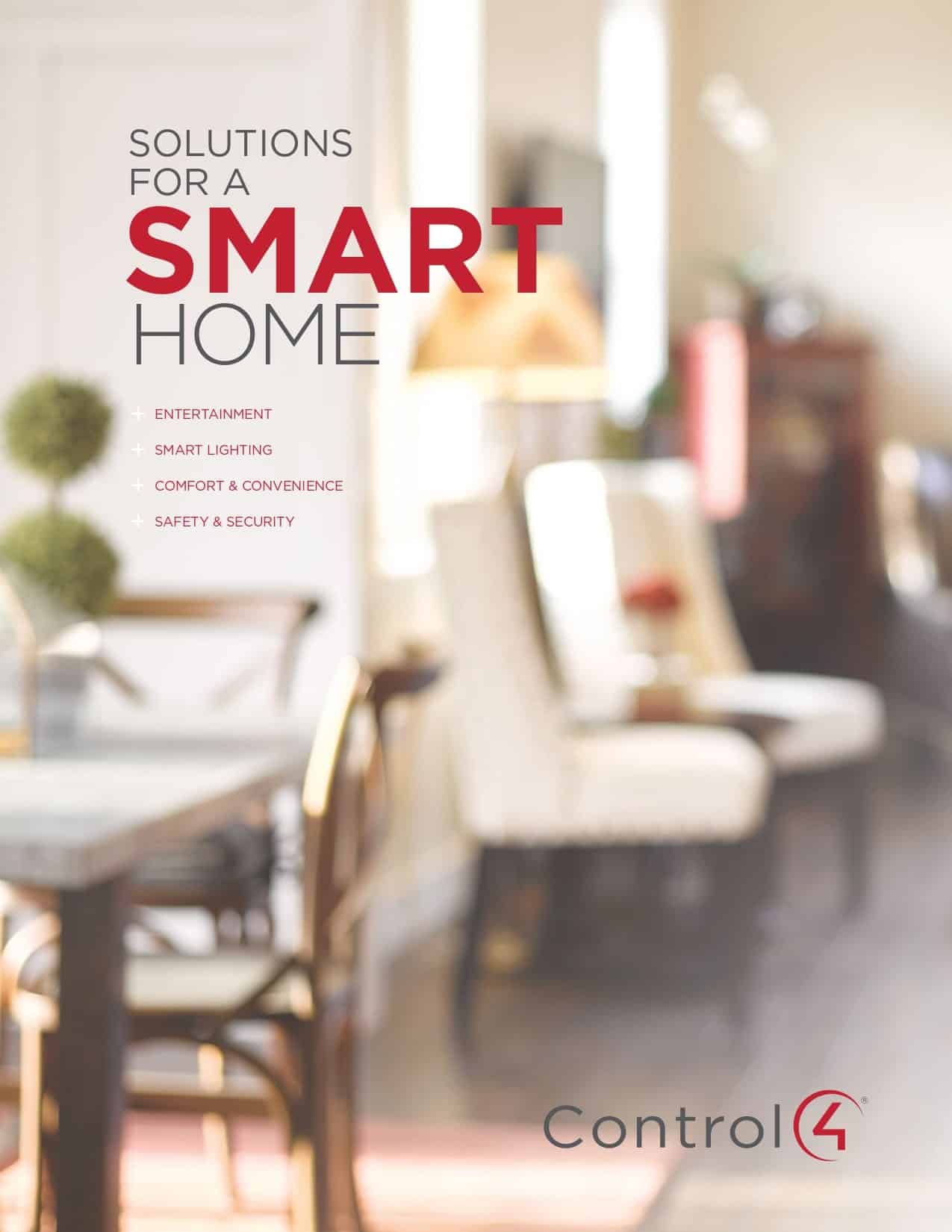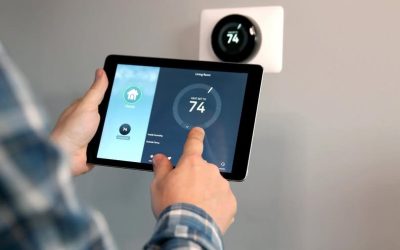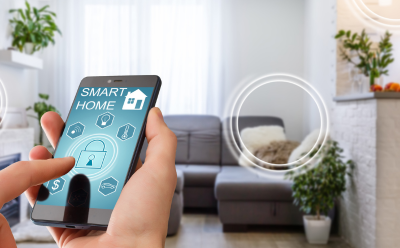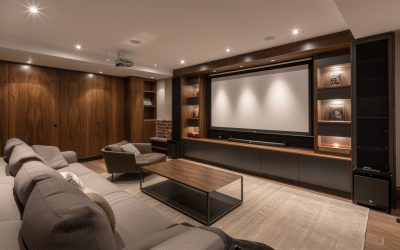Over the next decade, builders and architects who integrate smart home systems into their buildings are going to financially outperform and outpace those who don’t. The benefits of integrating smart home technology into new homes and buildings is a no-brainer if you understand consumer demand for smart homes and what goes into them.
According to a recent report on smart home growth, the global smart home market was valued at around USD 24.10 billion in 2016 and is expected to reach approximately USD 53.45 billion in 2022, growing at a CAGR of slightly above 14.5% between 2017 and 2022. [1]
But, homeowners aren’t just satisfied with wireless and Internet access. They want network stability, security, energy efficiency, comfort, convenience, music, and streaming video.
One: Homeowners Want Broadband
If you’ve lived in an apartment, or the city you may take high-speed or broadband service for granted. But rural areas may not have any Internet access or are underserved by any service. Yet, like city dwellers, their demand for bandwidth is tremendous. Internet services are making giant inroads into new areas daily, but in many new home developments, even if the service is there, the bandwidth in the home isn’t. Broadband is a number one necessity for homebuyers to enjoy both high-speed Internet, cable HDTV services, and emerging smart home technology.
The best time to wire a home right is when it’s being built and the walls are open, allowing builders to do the job right.
Two: Structured Wiring is Standard
Structured wiring has been the standard for the last 15 years. Today ’s homeowner doesn’t just have just one laptop or desktop computer they need to connect to the Internet. They have multiple computers, tablets, laptops, and phones. They also have multiple television and computer screens, entertainment systems and smart home controls. All that digital technology requires a serious infrastructure with the kind of bandwidth, speed, and reliability that wireless can’t handle. You can offer a standard package, including the ability to connect the home to wireless, smart lighting, and smart home appliances, or customize the standard package—a better option for the tech and media savvy homebuyer.
Homebuyers today want four things:
Audio
Homeowners want music and Internet access to streaming videos possible throughout the house via unobtrusive in-wall and in-ceiling speakers. They don’t want a wire nest of cables to deal with. It’s not just that structured wiring looks better and can handle more devices, it’s also much less susceptible to interference.
Peace of Mind
Door locks, motion sensors indoors and outdoors, and thermostats for heating, air, water leaks etc. mean peace of mind—something home buyers are reluctant to put a price on when it comes to keeping their family safe.
Additional Lighting
Homeowners want the ability to program light levels throughout their home, to control switches and dimmers wirelessly, either from their smart phones, a tablet, or a keypad.
Networking
One wireless router (WR-1) can’t penetrate an entire house, unless maybe it’s a “tiny house” with one room. That’s why the new standard for homes is a WiFi system with multiple access points—from the attic to the basement and in any rooms where homeowners want access to their devices. Having various access points throughout the house where several users can get full power, is a must-have.
Although the early days of Power over Ethernet (PoE), a technology that lets network cables carry electrical power, had issues, PoE is very much the go-to installation for most homes and businesses. According to Veracity Global, specifying Power over Ethernet brings many advantages to an installation:
Time and cost savings – by reducing the time and expense of having electrical power cabling installed. Network cables do not require a qualified electrician to fit them and can be located anywhere.
Flexibility – without being tethered to an electrical outlet, devices such as IP cameras and wireless access points can be located wherever they are needed most, and repositioned easily if required.
Safety – POE delivery is intelligent, and designed to protect network equipment from overload, underpowering, or incorrect installation.
Reliability – POE power comes from a central and universally compatible source, rather than a collection of distributed wall adapters. It can be backed-up by an uninterruptible power supply or controlled to easily disable or reset devices.
Scalability – having power available on the network means that installation and distribution of network connections is simple and effective.[2]
Three: Energy-Efficient Lighting Sells
Remember when compact fluorescent lamps (CFL’s) were all the rage? Those days are over. Homeowners hate CFL’s and love LEDs. LEDs are more energy-efficient, longer lasting (20 years or more with the right LED), and they give off better light with little to no heat. LEDs can be dimmable, programmable to turn on in different colors, wattages, and options.
Four: Advanced Appliances Save Money
Appliances account for about 13-15% of the cost of operating a home. The best option for a builder then is to look for Energy Star-certified appliances, right? Not really. There are a lot of new appliances that aren’t Energy Star-certified, but are more energy efficient than appliances that are!
There are range hoods have automatic shut-off options and heat sensors to enact higher-speed blowers. Moisture sensors in clothes dryers can sense when clothes are dry and stop the load in order to save energy. What is cutting edge appliance technology today may be obsolete in five years. Build the home to handle the future as well as the present.
Five: Smart Homes Are Standard — Make it Happen
Don’t just promise a smart home. Deliver one. Install a built-in experience rather than a handful of devices. Think about something like Control4. A Control4 automation system is custom built to fit around a homeowner’s lifestyle and needs. Whether the homebuyer wants to automate a single room or to design their dream home, let them know they have that option. Control4 can connect to Sub-Zero and Wolf E-series appliances and receive alerts when a pre-heat or timer is finished or an appliance door is open. But they’re even smarter than that. Some devices come with messaging, weather alerts, Pandora and Internet access to cooking shows, and Youtube videos.
Don’t stop at the kitchen. GE has an iPhone-connected GeoSpring Hybrid Water Heater that it says uses 62 percent less electricity than a standard electric water heater and can save $325 a year with an efficient technology that uses an air-source heat pump to help heat water.[3]
Remember, the “smart home” isn’t a gimmick. It’s a lifestyle experience that ties everything in the home together. From security alerts to checking and setting indoor and outdoor lighting, creating ambiance with single button lighting scenes so the homeowner never enters a dark home at night, to a “goodnight” function that locks the doors, and arms a security system—that’s what a true smart home does.
[1] Provided Powerpoint presentation
[2] http://www.veracityglobal.com/resources/articles-and-white-papers/poe-explained-part-1.aspx
[3] http://greentechadvocates.com/2012/10/25/ge-touts-the-iphone-connected-hybrid-water-heater/
